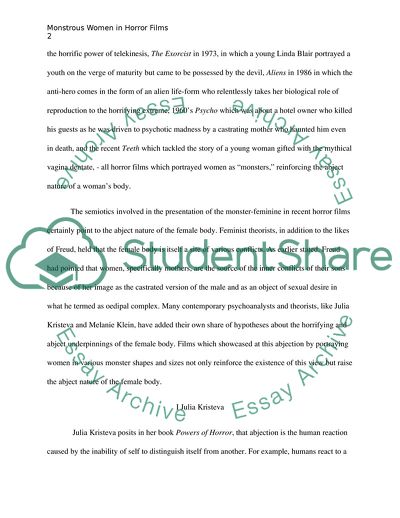Cite this document
(Monstrous Women in Horror Films Assignment Example | Topics and Well Written Essays - 2500 words, n.d.)
Monstrous Women in Horror Films Assignment Example | Topics and Well Written Essays - 2500 words. Retrieved from https://studentshare.org/gender-sexual-studies/1720984-monstrous-women-in-horror
Monstrous Women in Horror Films Assignment Example | Topics and Well Written Essays - 2500 words. Retrieved from https://studentshare.org/gender-sexual-studies/1720984-monstrous-women-in-horror
(Monstrous Women in Horror Films Assignment Example | Topics and Well Written Essays - 2500 Words)
Monstrous Women in Horror Films Assignment Example | Topics and Well Written Essays - 2500 Words. https://studentshare.org/gender-sexual-studies/1720984-monstrous-women-in-horror.
Monstrous Women in Horror Films Assignment Example | Topics and Well Written Essays - 2500 Words. https://studentshare.org/gender-sexual-studies/1720984-monstrous-women-in-horror.
“Monstrous Women in Horror Films Assignment Example | Topics and Well Written Essays - 2500 Words”. https://studentshare.org/gender-sexual-studies/1720984-monstrous-women-in-horror.


